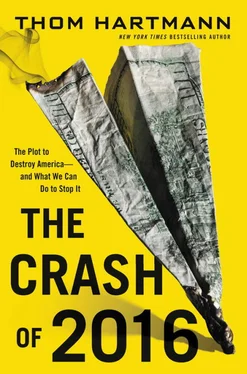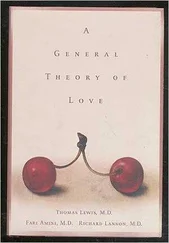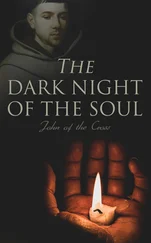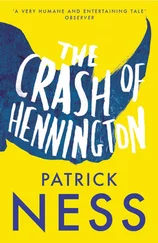In no particular order, I remember President Nixon announcing rationing and asking gas stations to close on the weekends. In December 1973, the month our first child was born, I was working really hard at keeping the gas tank of our van filled, because the hospital was miles away in the more upscale Detroit suburb of Livonia, and finding gas was getting harder and harder. There were long lines, and some stations were closed altogether.
A strike by truckers had further disrupted gas supplies, and also led to supermarket shelves being emptied. Fights broke out at gas stations, as we had to wait in line for hours to get gas. I remember sitting in our van one day after work (when the lines were particularly long) for about two hours when two guys ahead of me got out of their cars to engage in a fistfight. The news told stories from around the nation of people firing guns, although I don’t think anybody was actually shot.
Even though we had no money in the stock market, it was impossible not to notice the news screaming, in January 1974, about how the Dow was collapsing. During the next eleven months, it lost almost half its value. Businesses were failing all across the country, and retirees who’d put their savings into the stock market were wiped out.
This crisis persisted through the late 1970s, plaguing President Jimmy Carter’s first term. Under the pressure of economic hardship, doubts crept into the American psyche. People questioned whether the institutions born out of the New Deal were now failing and new institutions had to be built.
The Powell Memo had organized the business class under Royalist principles, while neoliberalism as promoted by the Mont Pelerin Society and the Chicago Boys had brought the political and economic class in line with the Royalists.
Carter was crushed in the 1980 election. Ronald Reagan rose to power and brought Milton Friedman on as an economic adviser.
The sun had set on an era of Keynesian stability and New Deal economics that benefited the middle class. The 1970s crisis-induced crack in the national psyche was just big enough for Ronald Reagan and the neoliberal shock troopers to step through it and carry forward an Economic Royalist revolution to tear down everything.
The long fuse to the Crash of 2016 was lit.
CHAPTER 4
A Middle-Class Primer
Communism is a hateful thing and a menace to peace and organized government, but the communism of combined wealth and capital, the outgrowth of overweening cupidity and selfishness, which insidiously undermines the justice and integrity of free institutions, is not less dangerous than the communism of oppressed poverty and toil, which, exasperated by injustice and discontent, attacks with wild disorder the citadel of rule.
—President Grover Cleveland, 1888 State of the Union Address
Before we get into how exactly Ronald Reagan and the Economic Royalists set out to destroy the middle class and, thus, set up the next Great Crash, we have to understand how a middle class is created in the first place.
A big shift happened in America during my grandfather’s life, which enabled my father to have a life that was unavailable to most of my grandfather’s peers. My dad had the good fortune of coming of age in the late 1940s and early 1950s, when the New Deal and the GI Bill were in full effect.
It took the leadership of FDR for government to again play a role in creating a middle class. If the average person—not just the skilled tradesman or the college-educated or the businessman—but the average person was to have the American Dream of a middle-class life, it would take more very specific interventions by government.
After my dad graduated from high school and came back from two years in Japan right after World War II, if there had not been explicit policies put into place by FDR, Harry Truman, and Dwight D. Eisenhower, he would have faced the very real possibility of being one of the working poor for the rest of his life.
But in 1949, he enrolled in the GI Bill to get a free education, and began going to college in Grand Rapids, Michigan. His goal was to work his way up to a PhD—he certainly had the intellect for it—and to become a college history professor. But the next year, he met my mom, they fell in love and got married, and thirteen months later I was born as Dad was finishing up his second year of college.
The expense of having a new son meant that Dad could no longer go to school full time, so he dropped out and got a job at the Alcoa steel plant in Grand Rapids, along with a part-time job selling cameras in a local department store. Working fourteen hours a day—eight of them in a cloud of asbestos (which is what ultimately killed him)—he was able to just barely get by, although for a while my mom had to move in with his parents when I was an infant. Two years after I was born, my brother Steve was born, and the load on both Dad and Mom increased even more.
They moved to Lansing to stay with my uncle Stan and aunt Doris, and Dad got two jobs, one selling Rexair vacuum cleaners and the other selling World Book Encyclopedias, both door-to-door. But America was still recovering from the war, and the door-to-door-salesman business was tough. One of my earliest memories is going to the “cheese store”—a government-surplus warehouse where my parents could get free (or nearly free) surplus blocks of American cheese and giant bags of macaroni, as well as powdered milk by the bucket.
I still have a love-hate relationship with macaroni and cheese, as it was my main meal for months, and to this day I hate the taste of powdered milk. Mom got pregnant again when I was four, and when I was five years old, my brother Stan was born. And Dad had to find a real job.
Fortunately, Lansing was an epicenter for the booming auto industry. General Motors and Fisher Body had major factories in town, and Dad got a job first at Lansing Die Sinking and then at Metal Machining Company. While he’d learned to be a competent machinist, he was no journeyman, but he was very, very good with details and bookkeeping. For the next forty years, he and a friend pretty much ran the office of that little fourteen-man business on behalf of the largely absentee owners, keeping the books, buying materials, making sales of finished products, and pitching in with the huge machines when necessary.
The machinists union was good to Dad—the company was a union shop. From the time I was around six, when he got that job, until the day he died in 2006, he, Mom, and their four sons all had full medical and dental insurance (I remember the doctor making house calls!); he had a pension when he retired; and we took two weeks of vacation every year, usually up to Newaygo to visit his sisters and my cousins. Dad made enough to buy a house in 1957 for about $15,000, with a government-guaranteed 3 percent thirty-year mortgage, which was fully paid off by the time he retired. He bought a new car—and paid cash—every three or four years.
He and Mom were obsessive antique and book collectors—they owned more than twenty thousand books, and my bedroom was carved out among the library-like rows of bookshelves in the basement. Dad was proud that he had read nearly every one—every night instead of watching TV, Dad and Mom would read for hours before we all went to bed (when Mom would read to us boys to put us to sleep).
This was all for a guy who had dropped out of college.
Had he been born a half century earlier, or in a nation that didn’t have specific government policies, he would have been working twelve-hour days, six or seven days a week, and never been able to afford the house, the car, or the vacations, much less all those antique books that we went searching for every weekend at the Salvation Army.
Читать дальше












